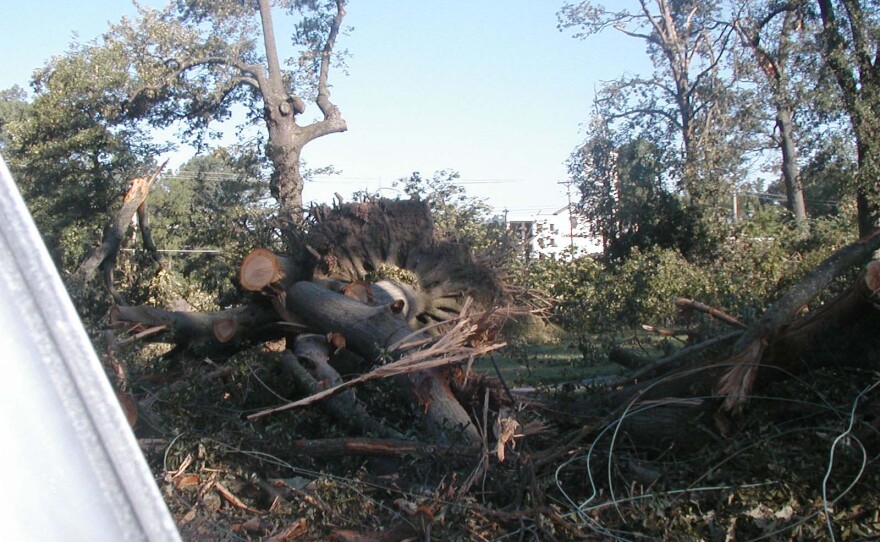On July 22, 2003, a particularly brutal summer storm hit Shelby County, causing widespread property damage and power outages that lasted between two and three weeks.
Ten years later, various organizations say the city and county are now better prepared to deal with unexpected weather emergencies.
MLGW RESPONSE
Glen Thomas, supervisor of communications and public relations at Memphis Light, Gas and Water, says the utility was widely criticized for being unable to address customer concerns more immediately in the wake of the event.
MLGW made several long-term improvements to its disaster response. In 2007, the public utility created an emergency operations center based out of the Netters Business Center on Whitten. There, MLGW can launch a more coordinated response.
The utility can also, in the event of an emergency, triple the size of its Customer Care Center so that more people can get answers to questions. Using mobile phones, customers can see real-time progress reports.
BETTER WEATHER WARNINGS
Jonathan Howell of the National Weather Service says that storm warnings have gotten more descriptive in the past 10 years. One innovation has been attaching “impact warnings” to incoming storm fronts. These warnings tell people what kind of specific damage might be expected.
In meteorological terms, Hurricane Elvis was known as a derecho, the Spanish word for "straight," which refers to its powerful straight-line winds that can have hurricane strength. Derechos are rare in this part of the country.
Howell said that, in 2003, protocols were not in place for, say, initiating tornado warning sirens well in advance. The radar did not indicate the presence of cyclonic winds, or an obvious funnel cloud shape. Today, the National Weather Service has more discretion to activate the sirens.
The technology for identifying possible major storms has also improved in the past ten years. At the time, the storm approached at such an angle that the weather service's radar couldn't pick up its true intensity. Today, meteorologists have a better network of radar views with which to access incoming storms.
HURRICANE ELVIS BY THE NUMBERS
$500 million -- Estimated total amount of damage caused by the storm.
103 mph -- Highest reported windspeed.
Between 15 and 20 -- Number of traffic signals disabled by a TYPICAL large summer thunderstorm.
Between 700 and 800 -- Number of traffic signals disabled by Hurricane Elvis.
1.1 million cubic yards -- Amount of debris collected after the storm.
5,000 tons -- Weight of all that debris.
4 -- Number of specially approved burning operations created to dispose of the debris.
12 -- Current number of blown circuits that would cause MLGW to go into emergency crisis mode.
279 -- Number of circuits blown during Hurricane Elvis. (Total number of circuits at the time were 380.)
4:5 -- ratio of MLGW customers who lost power.
$30 million -- Cost of MLGW restoration.
2,000 -- Number of MLGW workers, including outside contractors, who worked round the clock for 2.5 weeks to get power restored.
7 -- Deaths related to Hurricane Elvis.
340,000 -- Homes and businesses without power.
200 out of 800 -- Approximate number of severely damaged trees in historic Elmwood Cemetery.
2,000 -- Approximate number of damaged homes in the city.
http://www.youtube.com/watch?v=-0yBqNFtYq8
























